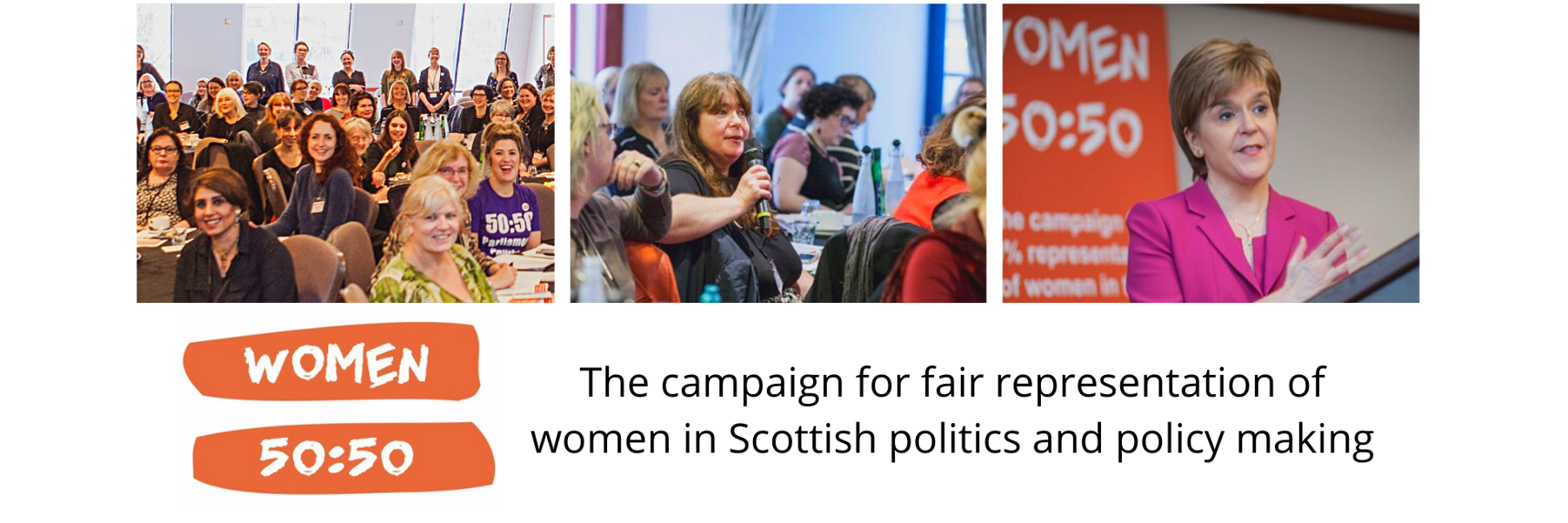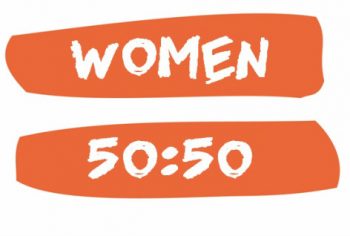Every year, the Scottish Government publishes a Programme for Government setting out its plans and priorities for the coming year – the Holyrood equivalent of the Queen’s Speech, but with far less pomp and ceremony.
When the Scottish Parliament was set up in 1999, it was with lots of input from feminist organisations, and the nation could boast that it was doing much better than the UK overall in terms of gender-equal representation[1]. But progress since then has not been everything a feminist could hope for, and it seems that equality slipped down party and government agendas for a while.
Looking through the Programmes for Government from the last ten years, we can see how things shift over the course of the decade. Gender equality is mostly absent from the various party manifestos of 2011, and equal political representation is not mentioned. So what has been going on in the government’s collective mind? Where do women fit in? And more specifically, where is women’s equality, particularly in terms of representation? How about an awareness of equality for women of colour, who face a double dose of institutional disadvantage and have yet to see one of their number elected as an MSP?
Things aren’t great in the 2011-12 programme, Renewing Scotland. It has eight chapters, six of which don’t acknowledge that women exist. Apparently women don’t enter into its Purpose and Vision (Ch 1), play no part in Accelerating Economic Recovery (Ch 2), have no specific needs to be considered in A Wealthier and Fairer Scotland (Ch 3) and so on. There’s not much in the 2012-13 one, either, though at least this one’s version of A Wealthier and Fairer Scotland includes plans to “help more women to achieve their full potential across the whole labour market” and support measures to tackle gender-based violence. In 2013-14 (Empowering Scotland) plans for the independence referendum inevitably take centre stage, and while women’s needs do merit a few mentions the only actual reference to gender equality is in the context of international development work rather than promoting it in Scotland.
Then something happens. In 2014-15 (One Scotland) gender equality doesn’t just make it into the programme, it’s right there in the introduction: “challenging all organisations to set a voluntary target for gender balance on their boards of 50:50 by 2020. We will legislate on this issue as soon as we have the powers to do so. The new Cabinet is leading by example with 50:50 gender balance.” It’s not hard to see why, in fact Nicola Sturgeon is quite explicit: “As the first female First Minister of our country I want to see a step-change in gender equality.” From now on questions of gender equality start to be acknowledged, and the gender effects of planned policies explored.
The Gender Balance on Public Boards Bill appears in the 2016-17 programme (A Plan for Scotland), along with reference to various initiatives to promote gender equality in enterprise, sport and business, citing the benefits of family-friendly workplace policies and gender-balanced boards; meanwhile plans for modern apprenticeships include aiming for better participation from women and BAME people.
By 2018-19 (Delivering for Today, Investing for Tomorrow) women’s needs are cropping up all over the place. There’s support for women returning to the workplace, better support for women who have been subjected to rape and sexual assault, the Equally Safe initiative which among other things challenges online misogyny and promotes a bill against female genital mutilation, and plans to work with employers and businesses to encourage women into higher roles and male-dominated industries. Disappointingly, its section on education has nothing on promoting gender equality by encouraging girls into STEM subjects, for example, or in SRE; and while gender equality comes a respectable fifth in the list of 17 “sustainable development goals” in the National Performance Framework there’s nothing about racial equality or rights for disabled people. But overall there is no doubt that addressing gender equality is here to stay: “We will ensure that gender equality continues to be central to our policy development, and… that the next and future Programmes for Government are gender sensitive.” That’s quite a change from the programme in 2011, and can only be a good sign. The 2019-20 programme (Protecting Scotland’s Future ) bears this out, with far too many gender-aware policy suggestions to list here. It is also worth noting that it specifically commits to supporting initiatives to encourage 50:50 representation at elections – the first time equality in political representation is explicitly mentioned.
2020-21’s programme is called Protecting Scotland, Renewing Scotland and of course responses to the coronavirus pandemic are foremost. It is encouraging to see that the government is already aware that this crisis is not affecting all sectors of society equally: “The impacts of COVID-19 have been and will continue to be experienced disproportionally by different groups, including women, those from minority ethnic communities, older people and disabled people.” Political representation is probably not very high on the list of priorities of those who are struggling with grief, lost livelihoods, and the long-term debilitating effects of the virus – but political decisions will affect how our post-pandemic society shapes up, and more women in government tends to mean more gender-aware legislation. While the hashtag #BuildBackBetter has been quite popular, the Women’s Equality Party preferred the slogan “Build Back Equal” for its conference in October – and now it’s been adopted by a Labour blogger too[2]. Perhaps a real cross-party political will to build a fairer society after the pandemic can mean that in another ten years we will be able to look back and trace the progress made towards a properly intersectional approach to tackling inequality.
Ruth Wilkinson is a Masters student at the University of Strathclyde – she is working on a project in the lead up to the Scottish Parliament election with Women 50:50 on how policy and manifestos have worked (or not) for women.
[1] In 1999 37.2% of MSPs were women, compared with 18.2% of MPs elected in 1997 – and even that was then a record high thanks to the influx of – cringe – “Blair’s Babes”.
[2] https://labourlist.org/2020/10/coronavirus-has-been-devastating-for-women-we-must-build-back-equal/

